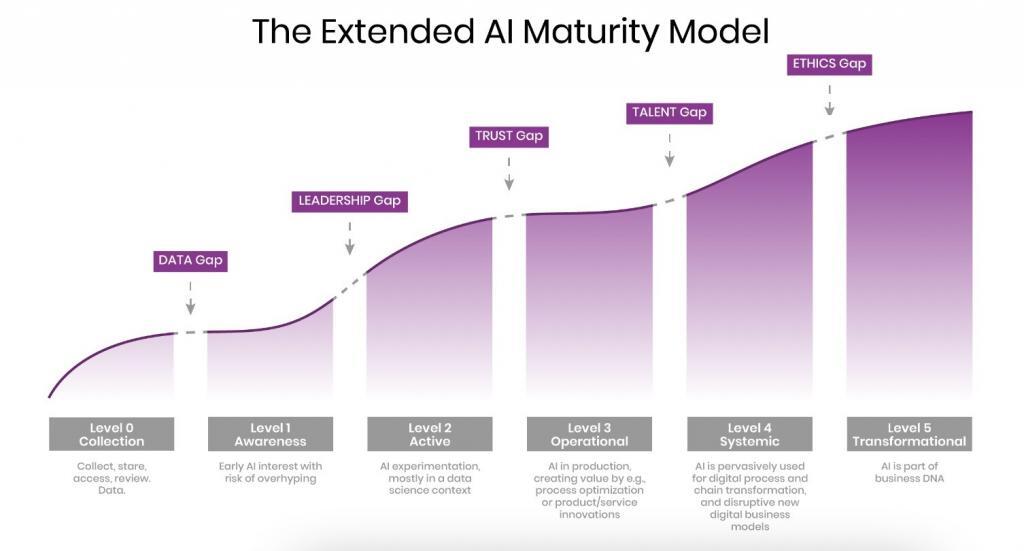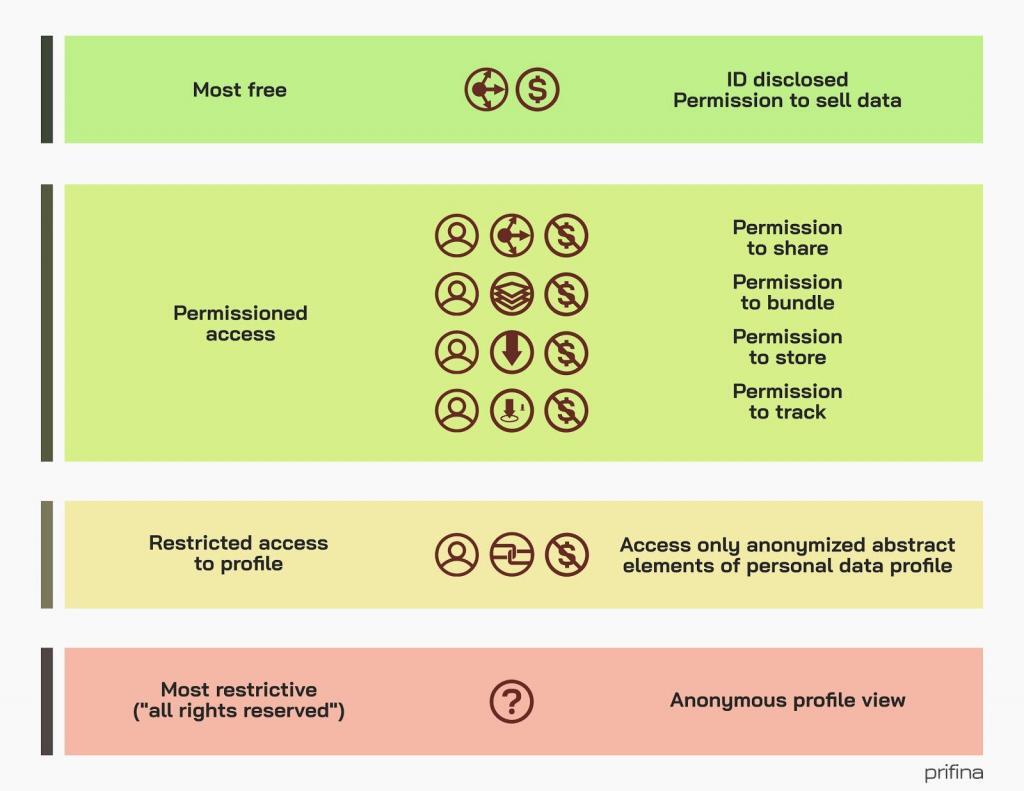
The eCommerce AI gap: Unlocking $80bn in Growth in the Next Decade
From where I’m standing, at the intersection between AI and eCommerce, I can see opportunities for businesses to better serve their customers – and themselves – in ways we never thought possible. The road to them, though, is not a straight line to success.
For those willing to patiently make incremental progress, there’s an $80 billion reward at the end. Here’s where you can find these opportunities for growth.
Shifting growth poles in eCommerce
Worldwide eCommerce sales topped $3.5 trillion USD in 2019, an increase of approximately 18% from the year before. Ecommerce is predicted to top $4.2 trillion USD in 2020 and reach more than $6.5 trillion by 2023. More than 2.1 billion shoppers are expected to purchase goods and services online by 2021. Increasingly, these online shoppers live outside the U.S.
When looking at the big picture, we can already see that the growth pole in eCommerce has moved away from the West. In the coming years, it’ll continue this shift, even with China’s consumer economy slowing down a bit.
The forecasts support this trend, anticipating that 1.4 billion people will join the world’s middle class by the end of 2020. Most of them (around 85%) are located in the Asia Pacific region (APAC).
The eCommerce sector has been on an upward trend for years but data helps to keep us objective.
Even though the growth pace is much faster than retail, eCommerce generated only 14.1% of total retail sales in 2019.
If we are to look at the next 3 years, analysts predict an average annual growth rate of 2%.
These numbers paint a picture of possibility and challenges.
While more customers with more money enter the online shopping scene, those primed to benefit are often established companies. Their marketing flywheel keeps spinning with incredible speed, consolidating their channels and conversion flows.
Challengers shouldn’t be discouraged though. They have an opportunity to satisfy the buyers’ craving for personalization, fairness, and connection at scale using AI to build an unfair advantage. Here’s how.
Committed to unglamorous beginnings
In spite of the increasingly lower barrier to adoption, companies are taking rather cautious steps to integrate and use AI for growth. A McKinsey Global Survey states that:
“[…] nearly half of respondents say their organizations have embedded at least one AI capability into their standard business processes, while another 30 percent report piloting the use of AI.”
Those caught up in the gold rush feeling of AI adoption might be disillusioned. The rewards are destined for businesses willing to spend time and effort on the fundamentals – things like properly setting up people, processes, and practices for success.
Because of this particular aspect, companies are barely using AI in spite of the excitement that seems to permeate the business world.
“Most respondents whose companies have deployed AI in a specific function report achieving moderate or significant value from that use, but only 21 percent of respondents report embedding AI into multiple business units or functions.”
For most organizations, AI is a point solution although it has the potential to do much more. Our first-hand experience taught us AI can effectively change how the entire business runs. It can clear new paths for growth and streamline fragmented and complex processes throughout the company.
For that to happen, organizations need people with the right know-how. Therein lies the main challenge.
Willing to use AI, but lacking the talent to do it
Gartner reported the number of companies implementing AI at an enterprise level tripled in 2019.
“Four years ago, AI implementation was rare, only 10 percent of survey respondents reported that their enterprises had deployed AI or would do so shortly. For 2019, that number has leapt to 37 percent — a 270 percent increase in four years.”
Chris Howard, Research VP at Gartner
There’s a lot of untapped potential in the market but it’s not enough to deploy or integrate the tech. Without the proper specialists, companies struggle to experiment with AI and expand successful processes company-wide.
It’s no surprise that the skills shortage is the most cited obstacle towards AI adoption. According to Gartner:
“The top challenges to adopting AI are: lack of skills (56%), understanding AI use cases (42%), and concerns with data scope or quality (34%).”
To better understand these challenges, we extended the AI maturity model proposed by Garner and identified not one, but five AI adoption gaps that eCommerce companies in particular need to overcome.

Understanding how to bridge these gaps can help you:
- clarify your data flows
- define your priorities
- set you up to adopt AI
- identify the solutions, tools, partners, and specialists you need to tackle your eCommerce growth challenges in a sustainable manner.
1. The Data AI Gap
The Gartner AI maturity model starts from Level 1. However, when looking at the long-tail of small and medium eCommerce businesses, we recognize that we can’t paint a realistic picture without a Level 0.
Ecommerce companies that are still figuring out the best ways to collect, store, access, and review their data are stuck at Level 0. The first gap they need to cross is exactly this: the data gap.
Marketers, CRO specialists, and data analysts agree that Google Analytics auditing is a prerequisite for most eCommerce companies. They can’t advance to a more complex stage without it. And that’s just one data source!
Consider the high performing eCommerce organization which is using an average of 10 to 14 marketing platforms. Collecting all that data, making sure it’s correctly complied, analyzing it – this is a monumental undertaking where a lot of organizations fail.
The companies that manage to cross the data gap have a standardized set of processes to audit and organize their data. They built their process by following these strategies:
Work with relevant stakeholders to identify data siloed in different departments.
Set up a meeting with team leads or send out a company survey to determine who’s using CX-relevant data.
Use the meeting or survey results to find key stakeholders who should be involved in the data audit process. These stakeholders should be able to explain what data they use, how they use it, where it’s stored, and how frequently it’s updated.
Map out your data’s whereabouts.
These three questions can help you clarify where your data is stored and how the people in the company use it.
“If data stored in multiple places needs an update, is it changed simultaneously or is there a lag for certain channels?
Is some data siloed in an inaccessible place (such as a personal Excel file or email) when other team members may need it?
Is some data unified within your CRM solution or customer data platform but missing relevant information?”
Actually mapping out the existing types of information, its whereabouts, and who needs access to it is invaluable and revealing.
Documenting the frequency with which information is collected or updated consolidates the process.
By the end of this step, you should have a comprehensive understanding of the company’s information architecture.
Deep dive into existing data and evaluate its quality.
The three elements you want to use when evaluating your data quality are accuracy, breadth, and consistency.
These factors will help you spot errors and issues in structure, formatting, or collection methodology that skew your insights.
After this stage, you’ll have gained a much deeper understanding of the data flows in your company and how they influence decision-making.
2. The Strategic Leadership AI Gap
Once the data gap has been crossed, most companies run only ad hoc pilots or apply AI in just a single business process according to HBR.
Why the slow progress?
“One of the biggest mistakes business leaders make is to view AI as a plug-and-play technology with immediate returns. Deciding to get a few projects up and running, they begin investing millions in data infrastructure, AI software tools, data expertise, and model development. Some of the pilots manage to eke out small gains in pockets of organizations. But then months or years pass without bringing the big wins executives expected.”
To get employees on board and smooth the way for successful AI launches, leaders should devote early attention to several aspects
- Provide a worthy mission that aligns employees around a common goal to reach using AI.
- Clarify and prove through visible actions that AI is not a threat to their job security.
- Anticipate organization-specific obstacles towards the inherent change brought on by adopting AI.
- Building a budget that includes ample resources for both technology and adoption, favoring the latter.
“In one of HBR’s surveys nearly 90% of the companies that had engaged in successful scaling practices had spent more than half of their analytics budgets on activities that drove adoption, such as workflow redesign, communication, and training. Only 23% of the remaining companies had committed similar resources.”
- Build a diverse portfolio of AI initiatives spanning different time ranges. This enables reaping rewards in the mid-term and maintaining motivation for the long-term.
3. The Trust AI Gap
Companies struggle to move from the pilots to company-wide programs – from focusing on discrete business problems, such as improved customer segmentation, to tackling big business challenges, like optimizing the entire customer journey.
Scaling AI implementation involves four changes in how different parts of the same company work together:
- Building cross-functional teams to minimize siloed data and efforts and foster interdisciplinary collaboration
- Using data-driven insights generated by AI to make more objective decisions that align the entire company
- Leverage reliance of data to make employees more independent in their decision-making, speeding up projects
- Cultivating a “test-and-learn” mentality throughout the organization, focused on incremental progress rather than big leaps.
4. The Talent AI Gap
The companies the furthest along in the AI maturity model have figured out their data strategy, and leadership has aligned the organization around a new m.o. At this stage, going from the Operation stage to the Systemic one depends on a key roster of experts.
According to Deloitte, there’s an equally pressing need for “AI builders” as there is for “AI translators.”
Researchers, software architects, data scientists, and project managers are part of the “AI builders group”, while business leaders, organizational change specialists, UX designers, and subject-matter experts “translate” business priorities to technical staff and vice versa.
At this stage, AI is deeply embedded into the company’s ecosystem, with processes, practices, and people leveraging it to reach KPIs.
To maintain the growth pattern, organizations must find and retain top-tier experts, which are rare and difficult to find.
What works in the employers’ advantage is that AI is slowly becoming “a positive job motivator.” Working with exciting new tech and possibilities can attract the right talent but ensuring retention takes a different kind of effort. Maintaining balance and training staff for new roles during company-wide changes requires a set of resources of its own.
That’s why building an in-house AI team is a complex undertaking, covered in more detail by Andrew Ng in his “AI Transformation Playbook.” That’s why few companies can afford it.
A more suitable alternative for most companies may be to build partnerships with companies who develop AI platforms. Often, they can provide the subject-matter expertise lacking in the field, and save organizations the effort.
5. The Ethics AI Gap
AI is complex, and many enterprises are still figuring out how to implement and gain value from the technology. The AI maturity model is a wide spectrum, but, currently, most find themselves in the awareness phase, with only a handful in the transformational phase.
To advance in the AI maturity model and to progress from Level 0 to Level 5, companies need a consistent infusion of capital at each step of the way. Those willing to invest in long-term transformations such as this one will be much better suited to deal with the inevitable future growth challenges.
The last hurdle in becoming a company where AI is part of its DNA assumes all the rest of the barriers have been conquered. At this stage, the main conversation worth having in the boardroom gravitates around ethics.
Why ethics?
As designers and developers of AI systems, it’s imperative to understand the ethical considerations of our work.
A tech-centric focus that places an intelligent system and its improvement at the center of the business is not enough to account for nuanced and complex human needs. An ethical, human-centric AI must be designed and developed in a way that’s aligned with the values and ethical principles of the society or the community it affects. The law of unintended consequences makes it an indispensable requirement.
This need for a common set of principles to guide AI development is a widespread concern in the industry and beyond. That’s why, on April 8, 2019, the High-Level Expert Group on AI in Europe presented the Ethics Guidelines for Trustworthy Artificial Intelligence. This followed the publication of the guidelines’ first draft in December 2018 that received more than 500 comments during the open consultation.
According to the Guidelines, trustworthy AI should be:
- Lawful – abiding by all applicable laws and regulations
- Ethical – respecting ethical principles and values
- Robust – from a technical perspective while taking into account its social environment.
Prifina, a company developing new services where people own and manage their private data, has recently released an open standard data profile and other developer tools in the open-source GitHub repository called “Liberty. Equality. Data.”
The released open-source data profile standard is based on the user-held data approach: individuals have tools that enable them to grant access to a third party, with certain provisions. For instance, individuals can determine the duration of third-party access and the extent of rights given to a third party. Individuals can also manage these permissions and revoke them.
Prifina also released a proposal for a unified system of permissions (licenses) to access personal data profiles. Such permissions will play an important role in determining the scope of rights which individuals can grant in their relations with third-party service providers. They will be also used in order to help individuals acknowledge the value of their personal data and with whom that data is shared.

It’s important to recognize that we are entering the next phase of the Internet, based on the use of commodities such as personal data, labor, resources, and services. in this paradigm, the interaction between individuals will be based on trust, automated agreements, and personal AI tools that help maximize individual utility. Therefore, licenses for the use of personal data will be of an ex-ante nature and the scope of permissions to access personal data will be determined by the individual itself. In other words, the individual will be able to communicate the terms of access and use of personal data profiles before or at the time of providing access to these profiles.
Discover your AI maturity stage
There’s a rift between what industry outsiders believe AI can do and the real value of the tech itself.
It’s not that the technology doesn’t deliver objective results. It’s just that AI creates value in unexpected ways that don’t always match the current setup.
Because AI works with layers of abstraction, there’s a tendency to pin often unrealistic hopes on it. For many, artificial intelligence holds the promise of incredible leaps that are just within reach.
Just like peeking behind the scenes on a movie set, the day to day reality of working with AI might take away the fascination. Developing AI-fueled products and growing AI-first companies relies on incremental progress. What’s more, these tiny improvements are not at all as spectacular as imagined in the short term. In the long term, however, their compound effect is massive.
So what could you be doing to take the next step towards making your company competitive in the AI-dominated landscape that’s about to become the norm?
Take a moment to discover where you stand in the AI maturity model. Use the questions below to evaluate your organizational posture regarding AI. Once you know where you stand, you’ll be better equipped to navigate the AI-fueled business world in a mature and predictable way.
